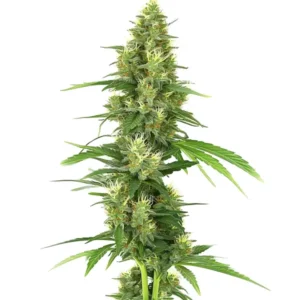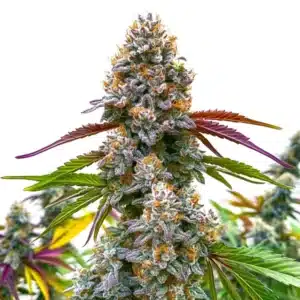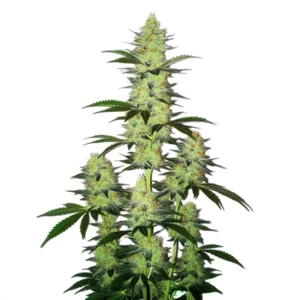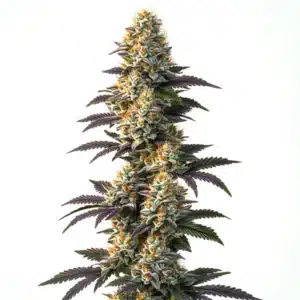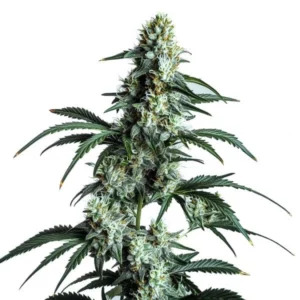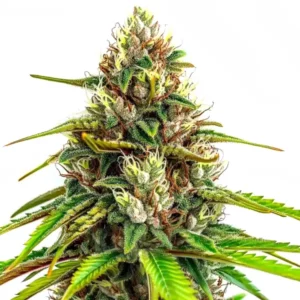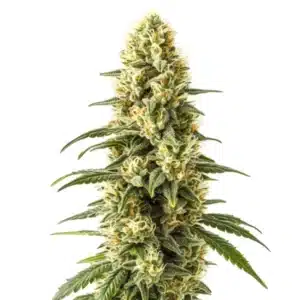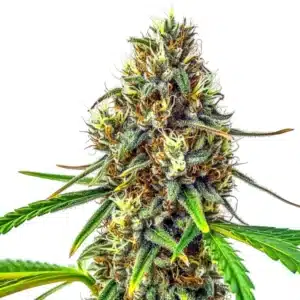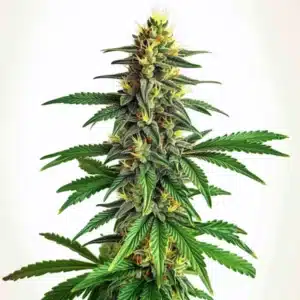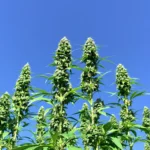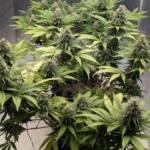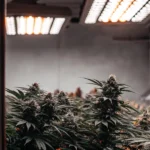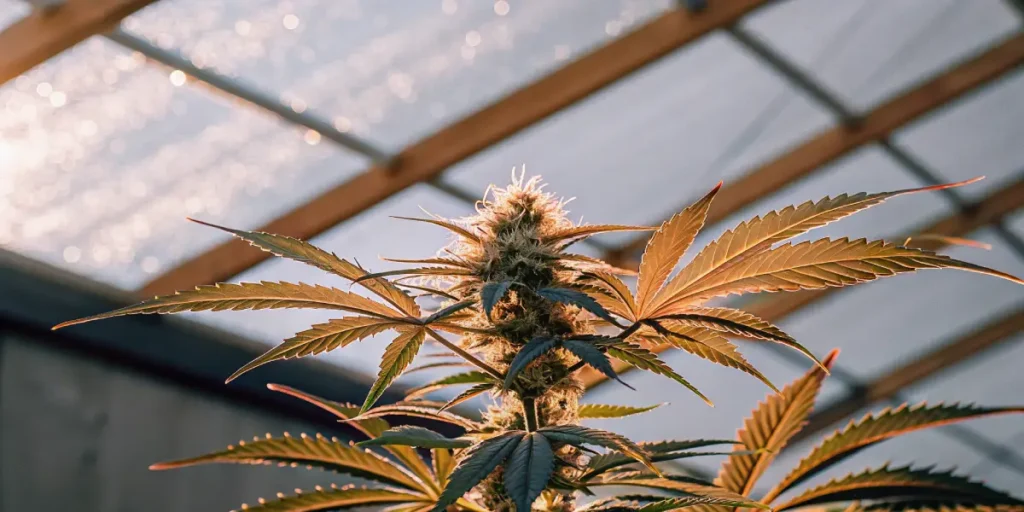
Cannabis Genetics Optimized for Leaf Turgor Control
Cannabis genetics optimized for leaf turgor control is a game-changer for growers seeking healthier plants. Leaf turgor refers to the water pressure inside plant cells, maintaining their rigidity. When leaf turgor is optimized, plants remain upright and vibrant, which is essential for photosynthesis and overall plant health. With the right genetics, growers can ensure their plants retain water efficiently, even in challenging environments.
Leaf turgor control in cannabis cultivation involves selecting strains that naturally manage water retention. Some strains are bred specifically for enhanced leaf turgor, allowing them to thrive with less frequent watering. This can be particularly beneficial for growers in arid regions or those looking to conserve water. Choosing the right genetics can make a significant difference in the success of your grow operation.
Recommended Strains
Big Bud
|
|
THC | 15% - 20% (Medium) |
|
|
Type | Feminized |
|
|
Yield | High |
|
|
Phenotype | 85% Indica / 15% Sativa |
Critical Daddy Purple
|
|
THC | 19% (Medium) |
|
|
Type | Feminized |
|
|
Yield | High |
|
|
Phenotype | 50% Indica / 50% Sativa |
Genetic manipulation for cannabis leaf turgor has been a focus for breeders aiming to improve plant resilience. By selecting strains with a natural ability to control leaf turgor, growers can minimize issues related to water stress. This not only leads to healthier plants but also maximizes yield potential. Let’s explore some cannabis strains from Blimburn Seeds that excel in this area.
Choosing the Right Strains
When selecting cannabis strains with enhanced leaf turgor, it’s important to consider your growing environment. Certain strains are better suited for specific climates, so knowing their natural tendencies can help you make an informed decision. For instance, strains that perform well in dry conditions are ideal for desert climates.
Blimburn Seeds offers a variety of strains optimized for leaf turgor control. One such strain is the Critical Daddy Purple, known for its robust growth and water retention capabilities. This strain is perfect for growers seeking a reliable option that can withstand fluctuations in moisture levels, ensuring consistent growth and development.
Besides to Critical Daddy Purple, another noteworthy strain is the White Widow. Known for its resilience and adaptability, White Widow thrives in environments where water scarcity is a concern. It’s a prime example of cannabis genetics optimized for leaf turgor control, ensuring plants remain vibrant and healthy.
Moreover, knowign the lineage and breeding history of these strains can offer insights into their performance. Strains developed with a focus on genetic manipulation for cannabis leaf turgor exhibit traits that are beneficial across diverse climates, expanding the options for growers seeking specific characteristics.
Top Strains for Leaf Turgor Control
Big Bud is another excellent choice for those looking to optimize leaf turgor in cannabis genetics. This strain is renowned for its massive yields and ability to maintain water pressure within its leaves. Big Bud thrives in various environments, making it a versatile option for growers worldwide.
For those interested in a more exotic option, the Mamba Negra strain offers a unique profile with enhanced leaf turgor properties. This strain combines robustness with a delightful aroma, ensuring your plants are not only healthy but also aromatic. Mamba Negra’s ability to manage water retention makes it a favorite among experienced growers.
The Blue Dream strain, with its balanced sativa-indica profile, is another contender for those seeking cannabis plant genetics for leaf water retention. Its ability to adapt and maintain turgor across different environmental conditions has made it a staple in many grow operations.
Additionally, Sour Diesel, known for its energetic effects and pungent aroma, offers enhanced leaf turgor properties that make it an excellent choice for those aiming to optimize growing conditions. Its natural resilience is a testament to the benefits of selecting cannabis strains with enhanced leaf turgor.
Promos & Deals
Practical Growing Tips
Optimizing leaf turgor in cannabis genetics requires more than just selecting the right strains. Proper cultivation practices are crucial for maximizing the potential of your plants. Start by ensuring your soil has good drainage and is rich in nutrients. This will allow your plants to absorb water efficiently without becoming waterlogged.
Regularly monitor your plants for signs of water stress. Wilted or drooping leaves may indicate issues with leaf turgor. Adjust your watering schedule as needed, and consider using mulch to retain soil moisture. These small adjustments can make a significant difference in maintaining healthy turgor levels.
Implementing an irrigation system can also aid in maintaining consistent moisture levels, crucial for cannabis genetics optimized for leaf turgor control. Automated systems help prevent over- or under-watering, ensuring your plants receive the right amount of water consistently.
Furthermore, integrating companion planting techniques can support water retention and soil health. Certain plants can help shade the soil, reducing evaporation and aiding in the overall maintenance of optimal leaf turgor levels for cannabis.
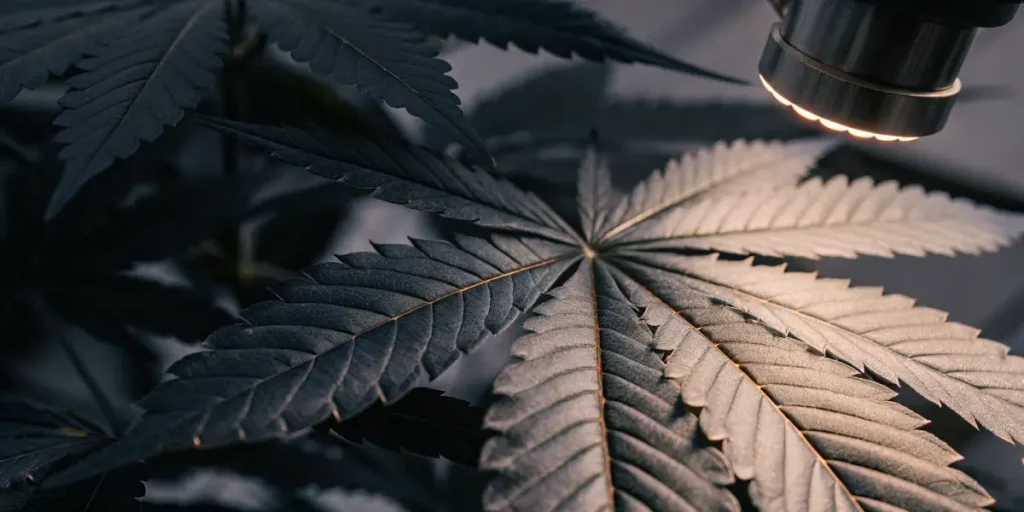
Monitoring and Adjusting Conditions
Temperature and humidity also play a role in leaf turgor control. Keeping your grow environment within optimal ranges helps your plants thrive. For instance, maintaining a temperature between 70-85°F and humidity levels around 40-60% can support healthy plant growth.
Lighting is another crucial factor. Ensure your plants receive adequate light to support photosynthesis, which is vital for maintaining turgor pressure. Adjust light intensity based on the growth stage of your plants to provide the best conditions for development.
Advanced growers may consider using sensors and monitoring equipment to provide real-time data on environmental conditions. This technology can alert you to changes that might impact leaf turgor, allowing for swift adjustments to maintain optimal growth conditions.
Additionally, knowing the specific needs of each strain will enable you to tailor your growing conditions more precisely. Some strains may require adjustments in light cycles or humidity levels to fully express their genetic potential for enhanced leaf turgor.
Benefits of Optimized Leaf Turgor
Choosing cannabis genetics optimized for leaf turgor control offers numerous benefits. Healthier plants are more resistant to pests and diseases, reducing the need for chemical interventions. This not only saves time and money but also results in a cleaner, more natural product.
Additionally, plants with optimized leaf turgor often require less water, making them more sustainable choices. For environmentally conscious growers, this means less impact on natural resources without sacrificing quality or yield.
Another benefit of optimizing leaf turgor in cannabis genetics is the improvement in nutrient uptake. With better water retention and distribution, plants can absorb nutrients more effectively, leading to enhanced growth and potency.
Furthermore, the resilience gained from cannabis strains with enhanced leaf turgor extends beyond just water management. These strains often exhibit improved overall vigor, allowing them to withstand various environmental stresses more effectively.
Real-Life Success Stories
Many growers have shared success stories when using strains optimized for leaf turgor control. For example, a grower in California reported a 20% increase in yield after switching to the Critical Daddy Purple strain. The plants required less frequent watering and showed significant resilience during hot spells.
Another grower in Nevada highlighted the benefits of Big Bud, noting its ability to thrive in harsh desert conditions. The strain’s natural water retention capabilities allowed it to flourish even when water availability was limited, demonstrating the power of selecting the right genetics.
In Colorado, a cultivator found success with the Mamba Negra strain. Despite extreme temperature fluctuations, the plants maintained robust health and produced a high-quality yield, thanks to its enhanced leaf turgor properties.
Similarly, a grower in Arizona noted the exceptional performance of Blue Dream, which adapted well to the dry climate, showcasing the effectiveness of cannabis plant genetics for leaf water retention in challenging conditions.
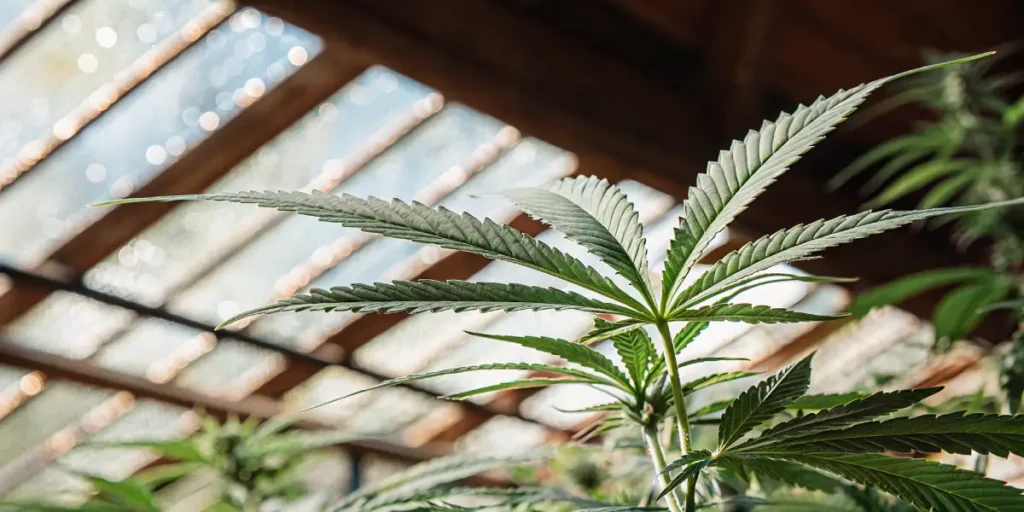
FAQs
What is leaf turgor, and why does it matter?
Leaf turgor refers to the pressure of water inside the plant cells, which helps keep the leaves firm and upright. This pressure is crucial for maintaining the plant’s structure and enabling photosynthesis. Without proper turgor, plants can wilt and suffer from reduced growth and yield.
Optimizing leaf turgor in cannabis cultivation ensures that plants retain enough water to stay healthy and productive. By choosing cannabis genetics optimized for leaf turgor control, growers can better manage their plant’s water needs and improve overall plant health.
Cannabis strains with enhanced leaf turgor provide a reliable way to manage these aspects, allowing for consistent growth even in less-than-ideal conditions. The importance of this cannot be overstated for those looking to maximize yield and quality.
Furthermore, knowing leaf turgor’s role in the broader context of plant physiology can help growers make informed decisions about cultivation techniques and strain selection, leading to a more efficient and successful grow operation.
How can I tell if my cannabis plant has optimal leaf turgor?
Healthy cannabis plants with optimal leaf turgor will have firm, upright leaves. If the leaves are drooping or wilting, it may indicate a problem with water retention. Observing your plants regularly will help you identify any issues with turgor.
Another sign of good turgor is vibrant leaf color. Leaves should be a healthy green, without signs of yellowing or browning. Proper turgor ensures that nutrients and water are effectively distributed throughout the plant.
Employing regular checks and maintaining a detailed log of plant health can aid in identifying trends that may affect leaf turgor. This proactive approach allows for timely interventions if issues arise.
Incorporating tools like moisture meters can provide additional insights into your plant’s water needs, helping you adjust your care routine to maintain optimal leaf turgor and overall plant vitality.
Which cannabis strains are best for dry environments?
Strains like Big Bud and Critical Daddy Purple are excellent choices for dry environments due to their natural ability to retain water. These strains have been bred to enhance leaf turgor, making them resilient in arid conditions.
For growers in particularly harsh climates, Mamba Negra also offers impressive water retention capabilities. Choosing these strains can help ensure your plants thrive despite environmental challenges.
Other strains such as White Widow and Sour Diesel have also proven effective in dry conditions, offering growers a variety of options when selecting cannabis genetics optimized for leaf turgor control.
It’s essential to consider not only the strain but also the specific growing techniques employed, as these can further enhance the inherent resilience of cannabis strains with enhanced leaf turgor.
Can optimized leaf turgor help with pest resistance?
Yes, plants with optimized leaf turgor are often more resistant to pests. Healthy, well-watered plants have stronger cellular structures, making it harder for pests to penetrate and cause damage.
Besides to choosing cannabis plant genetics for leaf water retention, maintaining optimal growing conditions will further enhance pest resistance. This results in healthier plants and a more abundant harvest.
The robustness provided by cannabis genetics optimized for leaf turgor control contributes to a plant’s overall defense mechanism, making it more challenging for pests to establish themselves.
Furthermore, reducing the reliance on chemical pest control methods by leveraging natural plant resilience aligns with sustainable cultivation practices, benefitting both the grower and the environment.
How do I balance watering needs with optimized leaf turgor?
Balancing watering needs involves monitoring your plants and adjusting based on their appearance and environmental conditions. Strains with enhanced leaf turgor typically require less frequent watering, so be careful not to overwater.
Using well-draining soil and observing how your plants respond to watering will help you find the right balance. Over time, you’ll learn to recognize the signs of optimal turgor and adjust your care routine accordingly.
Integrating technology such as automated watering systems can assist in maintaining the delicate balance required for optimal leaf turgor, reducing the guesswork for growers.
Regularly reviewing environmental factors, such as humidity and temperature, alongside watering practices, ensures that the conditions support the genetic manipulation for cannabis leaf turgor, promoting healthy plant development.


